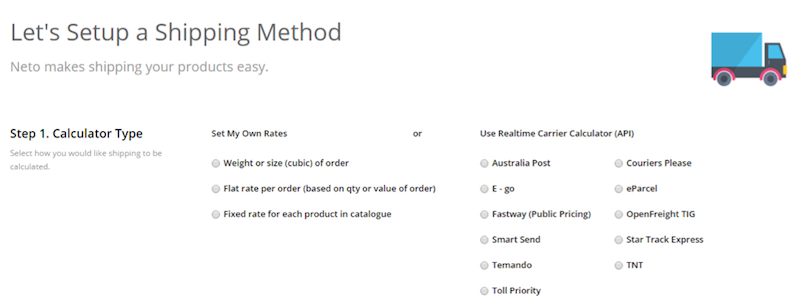
Shipping and Fulfilment

Simply getting an online shopper into the cart of your website does not automatically translate into a conversion. They might be genuinely interested in one or more of your products, and they might have intentions to buy, but often a particular factor will cause them to click off your page before completing the sale. So, what can online stores do to improve shopping cart retention rates and land those missed opportunities?
Various studies have shown that the primary reason for consumers abandoning their cart is due to high shipping and handling fees. This means that shoppers who were initially interested in a product they believed to be affordable were then hit with an unexpected shipping fee, suddenly the item did not seem as reasonably priced as they first thought.
Online consumers want a shopping experience that is streamlined and transparent, often losing patience and clicking off the page if they feel frustrated or deceived. This is reflected by statistics that show another key contributor to abandoned carts is shipping and handling costs that were listed too late in the checkout process. If your business’s whole premise is that your products are more affordable than anybody else on the market, you don’t want to counteract this marketing edge by having a surprise add on cost at the very end of your checkout process.
This is where carefully considering your shipping strategy will cut down on customer rebounds and ensure carts are pushed all the way through to the checkout.

Picking a shipping strategy for your business is not a simple cookie-cutter, one size fits all type solution. There are numerous influencers at play that must be considered prior to ensure you make the most suitable choice. For instance, what market are you in? What is your product range? What are your competitors doing? What are the industry trends? Are you targeting domestic, national or global markets? All of these factors will provide you with the necessary clues to piece together which shipping option(s) will optimise your customers shopping experience.
For example, are you in a position where you can offer free shipping on all purchases? Or would such an offer cut too heavily into your profit margins? If you are in a highly competitive market where consumers are spoilt for choice, it can often prove advantageous to utilise such a strong marketing playing card. Consumers are instantly drawn to the idea of free shipping and will be much more open minded when it comes to considering your brand over a competitor. However, this is not always feasible, unless you are able to absorb the extra shipping costs yourselves or raise the price of your products marginally to cover the expense. This is where conducting competitor research can help give you an idea of the benchmark you’ll be expected to meet to edge ahead of the pack.
If you’re catering to a more niche target market and supplying a product that would be classed as a luxury, or unique item, you can afford to be a little more flexible with your shipping options. Deciding on a flat rate across your product range, or for specific weight ranges or order totals, will ensure your consumers aren’t confronted by frustrating last minute shipping fees or sneaky add-on costs. It also keeps things straight forward and simplified for your users, ensuring they do not become frustrated with the process and give up. One such way to calculate your flat rate is to simply charge shoppers what you get charged by your chosen delivery providers. This enables you to establish a completely fair, and transparent relationship with your shoppers and help develop trust from the fact that you’re not bumping up the cost of your products to cover the difference.
To identify the online shopping behaviour of your clients, you will need to conduct comprehensive research to learn information such as their average spend, their average item count, at what point they click off your website and much more. If you are targeting both national and international users, then what shipping solutions do you have to cater for each demographic?
If your business caters to international and local consumers, then you will need to offer a number of shipping solutions to reflect this. Whilst offering free shipping on all domestic orders is an advisable strategy, this option would not be economical for international orders.
The formatting of your shopping cart will also play a role in optimising your checkout process. Similar to last minute shipping fees, customers don’t want to be hit with misleading conversion rates if the product was advertised in a foreign currency. Ensure your cart provides a quick and obvious means to translate the amount into the currency of the user, ensuring they’re aware of exactly what they’ll be expected to pay.
This is where a flat rate strategy will allow you to segment your domestic and international consumers, without confusing your shoppers. Websites such as Neto offer a straight-forward shipping calculator tool, which allows online stores to easily determine the flat rates for their products.
There is an array of shipping services available to online stores, each with different specialities depending on your specific needs. Australia Post, for example, is one of the country’s largest shipping authorities and specialises in both domestic and international delivery solutions. Other providers, such as E-go, focus on interstate shipping within Australia and would be better suited for businesses looking to only target national audiences. Australia Post also offers a service known as eParcel, which has been specifically tailored for high-volume online sellers who are looking for flexible and cost-effective bulk shipping.

The first stage in any shipping strategy is to understand your market and the behaviour of your users, only then will you be able to effectively optimise your online shopping experience.